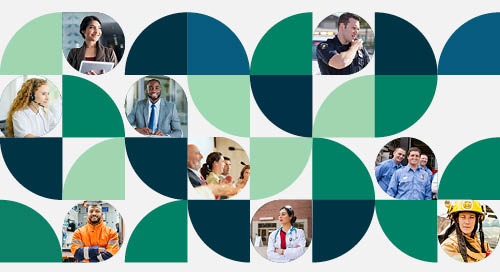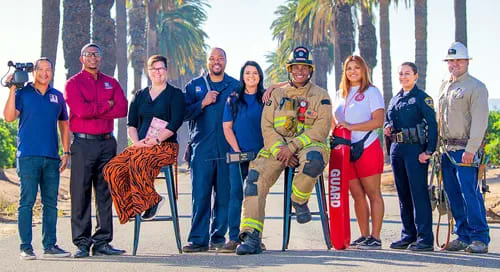 Leadership in government agencies presents a unique set of challenges. From managing limited resources to navigating bureaucratic structures and maintaining public trust, government leaders often find themselves in a high-pressure environment. These stressors can contribute to burnout, disengagement, and decreased retention. However, effective leadership strategies can turn these challenges into opportunities for building trusting relationships, growth, and innovation.
Leadership in government agencies presents a unique set of challenges. From managing limited resources to navigating bureaucratic structures and maintaining public trust, government leaders often find themselves in a high-pressure environment. These stressors can contribute to burnout, disengagement, and decreased retention. However, effective leadership strategies can turn these challenges into opportunities for building trusting relationships, growth, and innovation.
In a recent webinar, Bob Freytag and I explored how leaders in government organizations can create high-performing teams while avoiding common leadership pitfalls. Here are the key takeaways from our discussion.
Understanding Burnout and Engagement in Government Leadership
Burnout is a critical issue in government workplaces. Long hours, increasing responsibilities, and complex policies often leave employees feeling exhausted and unmotivated.
Bob opened the discussion by asking “What is happening with burnout? What drives it? How can we address engagement in government roles?” It’s essential to understand the root causes of burnout before attempting to implement solutions.
We also zeroed in on burnout from a leadership perspective. One of the major contributors to burnout is heroic leadership—a leadership style where leaders take on excessive responsibility, which leaves employees disengaged. Bob described the danger of this approach: “If we're not careful, we start to take on heroic leadership, which essentially means too much responsibility.” While the leader’s intention may be good, this approach often results in employees losing ownership of their work, leading to compliance rather than commitment.
The Pitfalls of Heroic Leadership
Bob highlighted the heroic leadership loop—a cycle where leaders assume so much control, their employees disengage. This leads to a workplace dynamic where leaders become the sole decision-makers while employees simply follow directions without taking initiative.
“You move from taking initiative, controlling agenda, and making important decisions to your direct reports agreeing—and then they start to acquiesce,” he explained.
This dynamic creates dependency, which stifles innovation and personal accountability among employees. Bob illustrated this with a humorous analogy: “If you’re not careful, you turn into a Pez dispenser—employees just press on your head for the answer.”
Trust: The Foundation of Leadership Success
One of the most important factors in creating a high-performing government team is trust. Without trust, leaders struggle to engage their teams effectively.
Drawing on our company’s Building Trust program, Bob introduced the ABCD model of trust:
· Able – Demonstrating competence in your role
· Believable – Acting with integrity and honesty
· Connected – Building relationships and showing empathy
· Dependable – Following through on commitments
He explained that leaders need to demonstrate positive behaviors in all four of these areas. You can’t be good at some and bad in others.
“Anything times zero equals zero. If people struggle to trust you, engagement will suffer,” he emphasized. Leaders must build trust with intention by prioritizing transparency, reliability, and authentic communication.
Leadership as a Partnership: Moving from Power Over to Power With
Bob also shared that effective leadership isn’t about controlling outcomes—it’s about fostering collaboration and engagement. To illustrate his point, he said “The word I’d like you to write down somewhere is with. What do we do with each other? It is about power with, not power over.”
This approach shifts leadership from a position of authority to a shared experience. Rather than solving every problem for employees, leaders should create opportunities for collaboration and empowerment.
By shifting from fixing to helping, leaders can create a workplace where employees take responsibility for their work and contribute meaningfully.
“Fixing is not the same as helping,” Bob shared. “If we truly want to empower our teams, we need to give them the space to problem solve and own their work.”
The Role of Psychological Safety in Engagement
In my portion of the presentation, I shared that employees will engage in meaningful discussions only if they feel psychologically safe. No one is going to say anything if they don’t have psychological safety. If they fear retaliation or criticism, they’ll stay silent.
Leaders must create environments where open dialogue is encouraged. Now more than ever, people want to feel heard. A simple but powerful phrase that fosters psychological safety is “Tell me more.” When leaders actively listen without judgment, they build a culture of trust, participation, and engagement.
The Power of Recognition in Retention
I also shared how recognition plays a critical role in building a resilient and engaged workforce. I encouraged leaders to ask employees “What would you like to be recognized for?” and “How would you like to be recognized?”
It’s important to remember that recognition should be specific to the individual and tied to impact. The brain stores in images, not words. We want to be specific in our praise, highlighting what someone did and how it made a difference.
Leading with Heart and Purpose
As government leaders, it’s easy to get caught up in transactional leadership. However, we must remember the heart of leadership is to care.
“Government is hard, and we forget the heart after a while. If we’re not careful, we transact,” Bob reminded us.
In closing, Bob and I emphasized three key leadership principles:
· Fixing is not the same as helping. Empower employees to take ownership.
· Results move at the speed of relationships. Build trust and psychological safety.
· Leadership is about partnership. Shift from power over to power with.
By implementing these strategies, government leaders can create an environment where employees thrive, engagement flourishes, and burnout is minimized. Leadership isn’t about having all the answers—it’s about creating the conditions for dialogue and success.
I hope I’ve piqued your interest in what else we shared. You can access a full recording of the session here. Be sure to check out the responses to polls and chats along the way—a lot of great information was shared by leaders from different state and local agencies.
About the Author
More Content by Vicki Halsey















